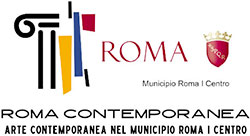Andrea Festa Fine Art gallery is pleased to present Where Forever Begins, a duo exhibition featuring new works by Corydon Cowansage and Matt Phillips, with a text written by Benedetta Monti.
Rothko’s use of colors can be associated with a finite series of calculations and formulas based on the same alphanumeric code. At the same time, the body of work presented in Where Forever Begins makes use of the ability to not respond to binding obligations, making the recombination of shape and color a rule. Following the example of the reigning Colour field champion, Matt Phillips (1979, Virginia) and Corydon Cowansage (1985, Philadelphia) reveal the results that can be achieved by the continuous reshuffling of the cards in play. In the two artists, the color mixes between the two canvases reveal an executive order, similar profiles where the alternation of poses and tones is incessantly coordinated in a different way. The exhibition opens the door to a clear encounter with the pre-existing, the archaic, the becoming, letting the signs and signals left as clues by the artists speak.
"All art is a memory in origin, it is in the dark, its fragments always live in the artist."
Paul Klee
Matt Phillips' painting transfers us directly to the seat of a dusty arthouse cinema showing the last moments of Bernardo Bertolucci's Tea in the Desert. Here, the sound drama of the cult film marries the severe and nervous sign of the artist, who reproduces a visual grain with an arid, luminous appearance and a structure given by color where the archaeological paths chase and reproduce each other. Thus, with the support of this short imaginary journey, it is possible to discern even more the abstract, dreamy fragility of Taut, 2022, or the meticulous spatial construction of Where Forever Begins, 2022. "I want my works to take part in a very intimate space: like a curtain that moves back and forth across the room, next to an open window, or like a mesh that moves when someone breathes”, the artist explains.
If the canvases of the exhibition are zoomed in, one notices a pre-established layering and a hint of chaos, the equally rough surface and pale coloring reminiscent of Jean Dubuffet's naive, scratched surface in The Thin-Nosed Magician, 1951. The American artist, however, unlike the supporter of Art Brut, paints by approaching the work in progress in the same way as one touches gold leaf when working on it - extreme delicacy, amazement. The instinctive gesture is not contemplated.
Matt Phillips succeeds in rendering the idea of movement through passages reminiscent of Futurist cube-like momentum. Not infrequently, his graceful ripples seem to come out of the canvas in a composed way, like a vibrant flow, and head towards the wall that supports the work;
they can easily be thought of as a macro, scenography composition, an invisible portal to a silent universe. On the theme of movement, Phillips' works have an internal traffic unrelated to the ritual dynamics that see the limit marked by the edge of the painting coinciding with the end of the sign. In fact, the artist sometimes ends the sides of the painting by leaving a gap, delineated through a chromatic range different from that visible in the given representation, which touches one or more of the four sides of the work. This habit is an integral part of the aesthetic leitmotifs that make up Phillips' stylistic signature.
The curtain closes and opens again in front of the canvases of Corydon Cowansage. Imagine entering a room where there is Oval with Points, 1968, by Henri Moore, together with Girl with Gloves, 1930, by Tamara de Lempicka and another icon of art history: Matisse's Dance, 1910. Now, let’s try insert an intermediate work that resurrects a common code: starting from Moore's essential solidity, magnifying the flat drawing lines of La danse and using them as separation from the background and outline of the forms, filling every cell of the painting with Lempicka's intense colors and the solemnity of her drapery. The result? Compact brushstrokes, sharp lines, saturated colors, libidinous surface.
Cowansage’s figures are swollen and emerge in the background like a portrait of a post-apocalyptic organism captured during an ice age. These profiles have a biomorphic appearance, with a surreal consistency, they could be light or heavy but they still traverse space without gravity. Silhouettes so ambiguous that one can imagine observing them under a microscope, tiny and invisible; as much as one can fantasize about finding them lying within a habitat on another planet: enormous, colossal, of disproportionate size.
Cowansage’s forms often have a voluminous perspective twist that creates disturbing optical illusions where chiaroscuro, used with avid abundance, comes into play and becomes the protagonist. Examples of this visual experience are works such as Red, Peach, Yellow, Purple, 2022, or Green and Turquoise, 2022. Decontextualized hybrids that recall the abundance of nature, leaves, acorns, but also recall echoes of the iconography linked to fertility and the human figure, (lips? hips?) leading the representation to speak through a timeless limbo. Thus, Corydon Cowansage encapsulates the complicated relationship between man, nature and artifice by placing the narrative on a single plane, bringing its operative parameter closer to a universal language.


